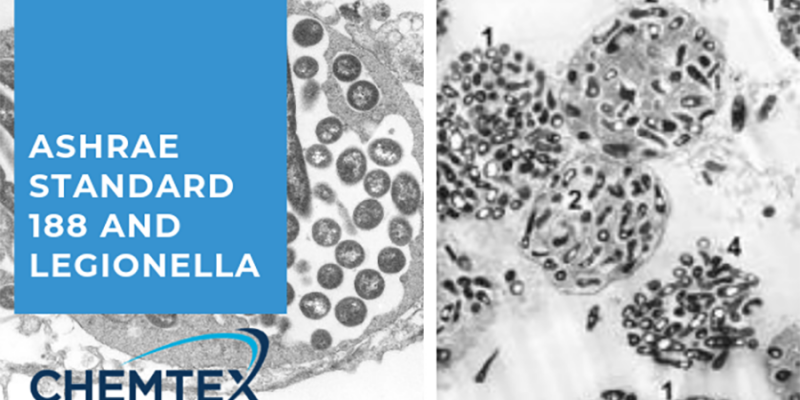
Aluminum Boiler Treatment
Mitigating the risk of Legionella is a top priority for anyone in charge of managing the water system in a building with a complex water system.
ASHRAE Standard 188 was developed in 2015 to help protect the public from contracting Legionellosis from contaminated water systems.
Legionellosis, also known as Legionnaire’s disease, is a potentially deadly form of pneumonia which sometimes results from exposure to the Legionella bacteria.
Legionella Bacteria Can Infect, Sicken and Kill People
Legionella bacteria do not circulate freely in water. Rather, they’re contained in a vacuole—a membrane-enclosed cavity—inside of amoebae and other protozoa. These single-celled organisms can colonize the water circulating in buildings, including in heating and cooling systems, and in water features such as fountains and spas. There are over 50 species and over 60 serogroups of these rod-shaped bacteria. The most virulent species is Legionella pneumophila, which causes approximately 80% of infections.
Legionellosis is not transmitted by swallowing the harmful bacteria, but by inhalation. Generally, contaminated liquid water doesn’t present a risk, but contaminated airborne water drops or mist, when inhaled or aspirated, will cause infection.
A single infected amoeba, inhaled, can provide an infectious dose. Once Legionella infects the human lung, it grows in amoebae-like phagocytic cells called macrophages.

Risk Factors for Contracting Legionella
The risk of acquiring Legionnaires’ disease is multi-factorial. It depends on three elements:
- Amoeba hosting Legionella bacteria must be present in the water
- The Legionella must be transmitted to the host
- The host must be susceptible
Many healthy people are not susceptible to the disease: their immune systems will successfully overcome Legionella. However, people with compromised health are at risk. This population includes:
- Individuals with chronic lung disease, cancer, and diabetes
- Smokers
- The elderly
- Immunocompromised persons
Risk Factors of Specific Building Features
Not only do humans have a range of risk factors, so do buildings. Risk factors which may contribute to a building’s systems becoming contaminated with the Legionella bacteria include:
Supplying multiple rooms or housing units with one or more centralized water heaters
Aerosol -generating water features such as fountains, direct evaporative coolers, misters, air washers, or humidifiers.
The Role of ASHRAE 188
According to the Centers for Disease Control and Prevention, ASHRAE 188 defines:
- The types of buildings and devices which require a water management program
- The minimum components a water management program must incorporate
- Water-related features (e.g., hot tubs, cooling towers) that must be controlled to prevent the growth and spread of Legionella
- Who should participate on the water management program team
- The schedule according to which water management programs should be reassessed and updated
ASHRAE 188 applies to systems for non-potable water, potable water (used for drinking and showering), and recreational water. It does not apply to single family or small multi-family residential buildings.
Each building will have its own requirements to comply with ASHRAE 188, based on the specifics of its design and utility systems. While the ASHRAE standard is voluntary, failure to comply with it can expose building owners to civil and possibly criminal action.
To ensure that your building complies with water treatment best practices, review the ASHRAE 188 standard, or contact Chemtex and have an experienced professional review your water circulation setup and treatment programs.



/NQA-ISO-9001-Logo-ANAB.jpg)